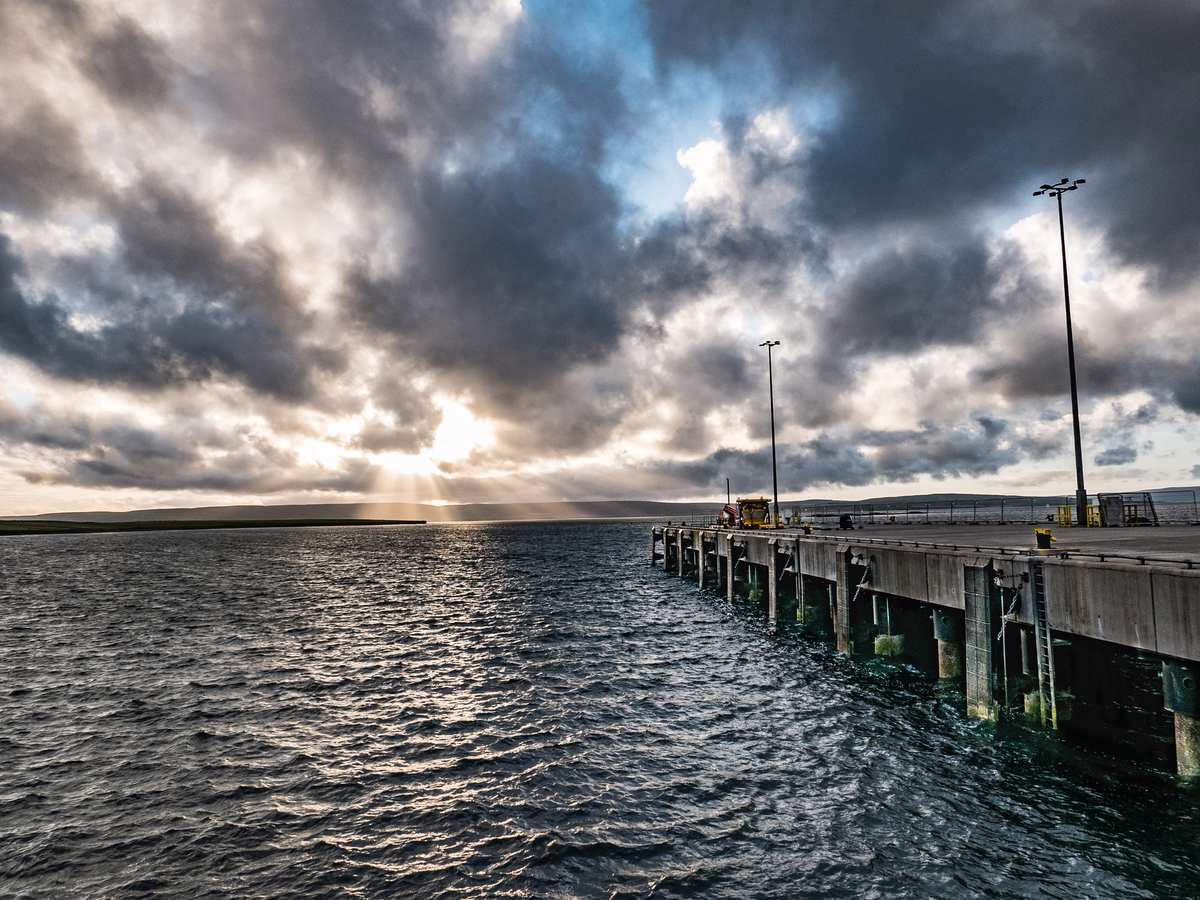Schneider Electric joins cold-ironing buoy project
French electric company Schneider Electric has joined a project to develop a cold-ironing buoy that can provide power to cruise ships at anchorage.
 PHOTO: The sun bursts brilliantly through the clouds over a turbulent sea surrounding Hatston Pier, in Kirkwall, Orkney, Scotland. Getty Images
PHOTO: The sun bursts brilliantly through the clouds over a turbulent sea surrounding Hatston Pier, in Kirkwall, Orkney, Scotland. Getty Images
Other project members include UK-based marine consultancy firm Orcades Marine Management Consultants, Orkney Island Council Harbour Authority, shipping agency GAC UK and environmental consultancy firm Aquatera.
Cold ironing is an electrical power supply provided to ships when they are docked at ports. Instead of running the onboard engines to power essential systems while docked at ports, shore power facilities allow ships to connect to the local electrical grid. This helps in the reduction of greenhouse gas (GHG) emissions and particulate matter around the port area.
Cold ironing or shore power buoy is used to provide power to offshore vessels.
The project aims to provide green power to cruise ships that cannot berth at Hatston Pier while anchoring at the Bay of Kirkwall in the Orkney Islands, Scotland. This is because the berth at Hatston Pier has limited space and cannot allow two large vessels at a time, a spokesperson from Orkney Island Council Harbour Authority told ENGINE.
Some of these ships are “too big to dock in the local harbour,” a spokesperson from Schneider Electric informed ENGINE.
Currently, the berth at Hatston Pier is not shore power enabled but there are plans to enable it in the future, the spokesperson from Schneider Electric added.
“While cold-ironing is already widely available for ships at berth, no solution currently exists to provide cold-ironing for ships at anchorage,” Schneider Electric claimed.
Construction of the cold-ironing buoy will commence after the completion of a feasibility study. The buoy will be powered by an onshore power supply (OPS) connected via a subsea cable to the anchorage point.
The cold-ironing buoy will harness energy from nearby renewable sources such as wind turbines, solar panels, and tidal turbines. This energy will be used to power cruise ships.
The project has received funding from the UK’s Department of Transport under Clean Maritime Demonstration Competition (CMDC) programme, which aims to develop the necessary technology to reduce carbon emissions in the UK's domestic maritime sector.
By Tuhin Roy
Please get in touch with comments or additional info to news@engine.online





